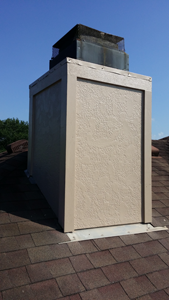Victoria, TX. Humidity, Wood, Rot… Unfortunately these things go together like peas and carrots…
Wood that is exposed to moisture just eventually rots. And if it’s in a place where it can’t dry out, well it happens even quicker. Add the wonder of that little bug called a termite and you’ve got a recipe for disaster…
Obviously the first line of defense is keep it dry! Kind of difficult sometimes.
If you’ve got a leak that you’re aware of, then get it fixed. Period. It won’t get better. And if you begin to notice some soft area or rotted wood appearing and you’re not aware of the leak… you might have a much bigger problem than you think. Not to scare you but wood doesn’t rot over night. So when you notice it that means it started a while back. That means water has been present for a long time and may have run into areas that aren’t immediately visible and the deterioration could be much deeper than you might first thing.
As with many things in life, the sooner you get it fixed, the better.
Common places for wood to rot are around chimneys, the fascia boards and soffits – especially at the corners of the roof. Anywhere water is able to hang around for awhile. It’s a good idea to check around your roof, chimneys, fascia and soffit areas on a regular basis for anything suspicious.
Areas around windows and doors can also be susceptible – particularly if paint has faded or worn away or caulking has pulled away leaving a place for water to get in. Doors and windows can also be a bad place for rotting when there’s not much overhang, or water splashes up on them during a rain.
Whenever possible I like to replace rotted trim boards with PVC boards. PVC won’t rot, won’t absorb moisture, and it can be cut, and worked like wood and painted to match.

The trim around this chimney had rotted out. This is PVC board that’s been installed and painted.
Door jambs will commonly rot at the bottom. Water splashes on the lower part of the door and gets around the end of the threshold and sometimes under it. Over time the wood softens and rots away and if you wait too long, water will begin working its way past the jamb into the studs and plate beside the door.
Again, the sooner it’s fixed the better!
Most often the best thing to do with a rotted door jamb is to replace the door and jamb with a whole new unit. I prefer the “rot-free” jambs that have a composite material under the threshold and a jamb that’s rot resistant. Any time you replace something you might as well install the best product available.
Repair work will cost less if you address the problem as soon as it’s noticed.
If you’ve noticed any soft places, or obvious rot, give me a call today!
